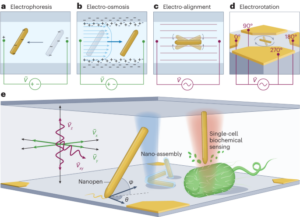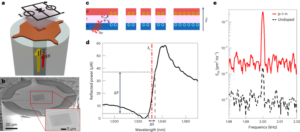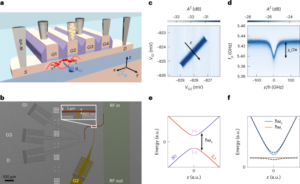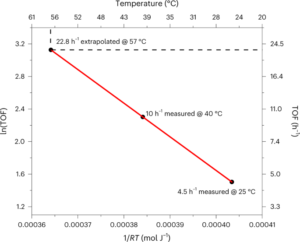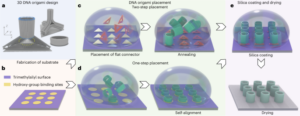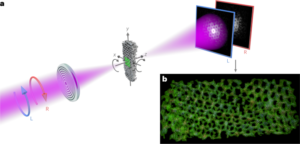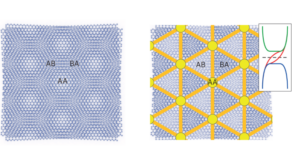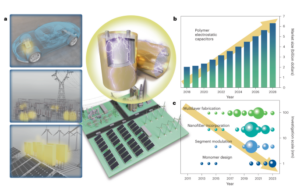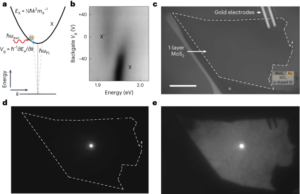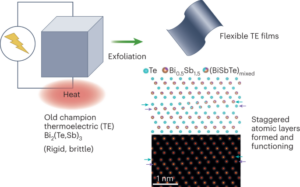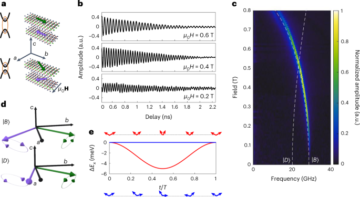The passing of Gordon Moore, an Intel co-founder, is a good time to reflect on the achievements of the semiconductors industry and how nanomaterials could allow Moore’s law to outlive its formulator.
He said it was just a lucky guess on his part, a lucky extrapolation, a prediction that was never meant to become a law: Gordon Moore’s intuition would eventually shape the whole semiconductor industry.

In 1965, early days for the integrated circuit, three years before Intel, Gordon Moore, then director of the research and development laboratories at Fairchild Semiconductor, published a ‘The experts look ahead’ article1 that formulated the idea that the number of transistors on a silicon chip would double at regular intervals for the next ten years exponentially increasing the data-processing power of computers, all while enabling a way to cheaper electronics. In that article, which at the time didn’t make many waves, Moore proposed that should the industry be able to follow the rate of performance improvement of the time, then the realization of technological “wonders such as home computers, automatic controls for automobiles as well as personal portable communications equipment” could be well within reach. In his own words, he could never see beyond the next three generations of technology but was persuaded that miniaturization is the only way of making transistors more performant and cost-effective. With every decade passing, Moore repeatedly expressed his constant admiration for the ingenuity of engineers and scientists that, despite frequent practical roadblocks, kept the technology development firmly on trend, from doubling the number of transistors every couple of years to just eighteen months.
Seeing his law becoming a self-fulfilling prophecy, Moore maintained his unwavering advocacy for silicon as the mainstream material for the foreseeable future. In one of his late interviews, he expressed scepticism regarding the prospects of quantum computing beyond some specific applications, never mentioning any nanomaterial as a potential successor to silicon. Yet, he was fairly certain that the downscaling would eventually push the device structures to the atomic dimensions, ushering in the era of nanoscale electronics.
Emerging low dimensional materials, such as 2D semiconductors or carbon nanotubes, might not have been directly acknowledged by Gordon Moore, but the increasing number of proponents of 2D and 1D materials is now backed by multibillion dollars investments; industry giants including Intel and Taiwan Semiconductor Manufacturing Company have unquestionably placed their bets.
In recent years, the main research efforts in 2D material growth, especially transition metal dichalcogenides (TMDs) and MoS2 in particular, have been focused on high uniformity, large-scale demonstrations compatible with semiconductor manufacturing. However, the current technology readiness of 2D-based electronics is nowhere near sufficient to enable a swift transition towards heterogeneous silicon/2D platforms just yet, let alone the ending of the silicon era in favour of TMDs.
Regardless, progress is coming fast and steady. Single monolayer MoS2 transistors have gone from 4-μm channel length2 to sub-1-nm fabricated on a 2-inch wafer3, showing a wafer-scale demonstration of functional circuits4,5. Recently, a general and highly reproducible approach for growing crystalline 2D layers and their van der Waals heterostructures at a temperature compatible with the back-end-of-line process was reported6,7. With every new piece of research, 2D materials get closer to the possibility of integration with silicon and possibly outperforming and replacing it altogether. It would probably mean Moore’s law will go on; despite being pronounced dead so many times in the past.
At Nature Nanotechnology, we salute the incredible journey of the 2D materials community for the formidable progress they have made in the past two decades, from purely basic science to the first proof-of-principle nanodevices and finally nanodevice integration. We feel honoured of the trust the community has put in the journal and pledge to continue to cover to the best of our ability the full spectrum of the 2D materials research output. In addition, we are also very happy to see our long-serving editor, Olga Bubnova — a name that might sound familiar to some — starting a new adventure with the launch of a new journal: Nature Reviews Electrical Engineering (https://www.nature.com/natrevelectreng/). We also take the opportunity to announce to the readers that Dr. Lu Shi, formerly a deputy editor at Advanced Materials, has replaced Olga in our editorial team. Broadly, Lu will cover the same areas as Olga’s.
- SEO Powered Content & PR Distribution. Get Amplified Today.
- PlatoAiStream. Web3 Data Intelligence. Knowledge Amplified. Access Here.
- Minting the Future w Adryenn Ashley. Access Here.
- Buy and Sell Shares in PRE-IPO Companies with PREIPO®. Access Here.
- Source: https://www.nature.com/articles/s41565-023-01411-5
- :has
- :is
- :not
- 1
- 12
- 2011
- 2021
- 2022
- 2023
- 2D
- 2D materials
- 40
- 49
- 7
- 8
- a
- ability
- Able
- achievements
- acknowledged
- addition
- advanced
- Advanced materials
- Adventure
- advocacy
- AL
- All
- allow
- alone
- also
- altogether
- an
- Anchor
- and
- Announce
- any
- applications
- approach
- ARE
- areas
- article
- AS
- At
- Automatic
- automobiles
- backed
- basic
- BE
- become
- becoming
- been
- before
- being
- BEST
- Bets
- Beyond
- broadly
- but
- by
- carbon
- carbon nanotubes
- certain
- Channel
- cheaper
- chen
- chip
- click
- closer
- Co-founder
- coming
- Communications
- community
- company
- compatible
- computers
- computing
- constant
- continue
- controls
- cost-effective
- could
- Couple
- cover
- Current
- data processing
- Days
- dead
- decade
- decades
- deputy
- Despite
- Development
- device
- dimensions
- directly
- Director
- dollars
- double
- doubling
- e
- E&T
- Early
- editor
- Editorial
- efforts
- Electronics
- enable
- enabling
- Engineers
- Era
- especially
- Ether (ETH)
- eventually
- Every
- experts
- exponentially
- expressed
- fairly
- familiar
- FAST
- feel
- Finally
- firmly
- First
- focused
- follow
- For
- foreseeable
- formerly
- formidable
- frequent
- from
- full
- full spectrum
- functional
- future
- General
- generations
- get
- Go
- good
- Growing
- Growth
- happy
- Have
- he
- High
- highly
- his
- Home
- How
- However
- HTTPS
- idea
- improvement
- in
- Including
- increasing
- incredible
- industry
- ingenuity
- integrated
- integration
- Intel
- Interviews
- intuition
- Investments
- IT
- ITS
- journal
- journey
- just
- kept
- large-scale
- Late
- launch
- Law
- layers
- LINK
- Look
- Low
- made
- Main
- Mainstream
- make
- Making
- manufacturing
- many
- material
- materials
- mean
- meant
- metal
- might
- months
- more
- MultiBillion
- must
- name
- Nanomaterials
- nanotechnology
- Nature
- Near
- never
- New
- next
- now
- number
- of
- on
- ONE
- only
- Opportunity
- or
- our
- outperforming
- output
- own
- part
- particular
- Passing
- past
- performance
- personal
- persuaded
- piece
- Platforms
- plato
- Plato Data Intelligence
- PlatoData
- possibility
- possibly
- potential
- power
- Practical
- prediction
- probably
- process
- Progress
- proposed
- prospects
- published
- purely
- Push
- put
- Quantum
- quantum computing
- Rate
- reach
- readers
- Readiness
- realization
- recent
- recently
- reflect
- regarding
- regular
- REPEATEDLY
- replaced
- research
- research and development
- Reviews
- roadblocks
- Said
- same
- Science
- scientists
- see
- semiconductor
- Semiconductors
- Shape
- should
- Silicon
- single
- So
- some
- Sound
- specific
- Spectrum
- Starting
- steady
- such
- sufficient
- SWIFT
- Taiwan
- Take
- team
- technological
- Technology
- Technology Development
- ten
- that
- The
- their
- then
- they
- three
- time
- times
- to
- towards
- transition
- Trend
- Trust
- two
- unwavering
- very
- was
- waves
- Way..
- we
- WELL
- which
- while
- whole
- will
- with
- within
- words
- would
- wu
- X
- years
- yet
- zephyrnet

